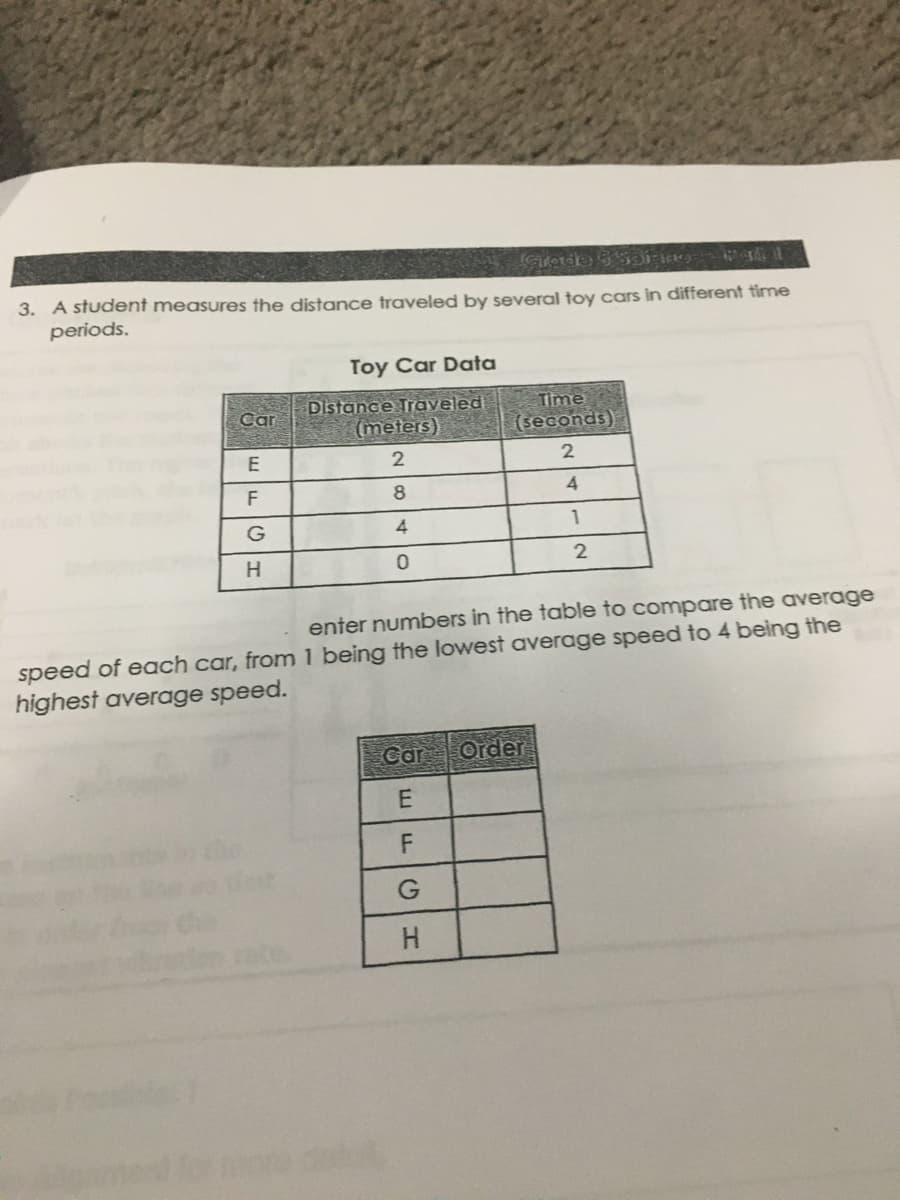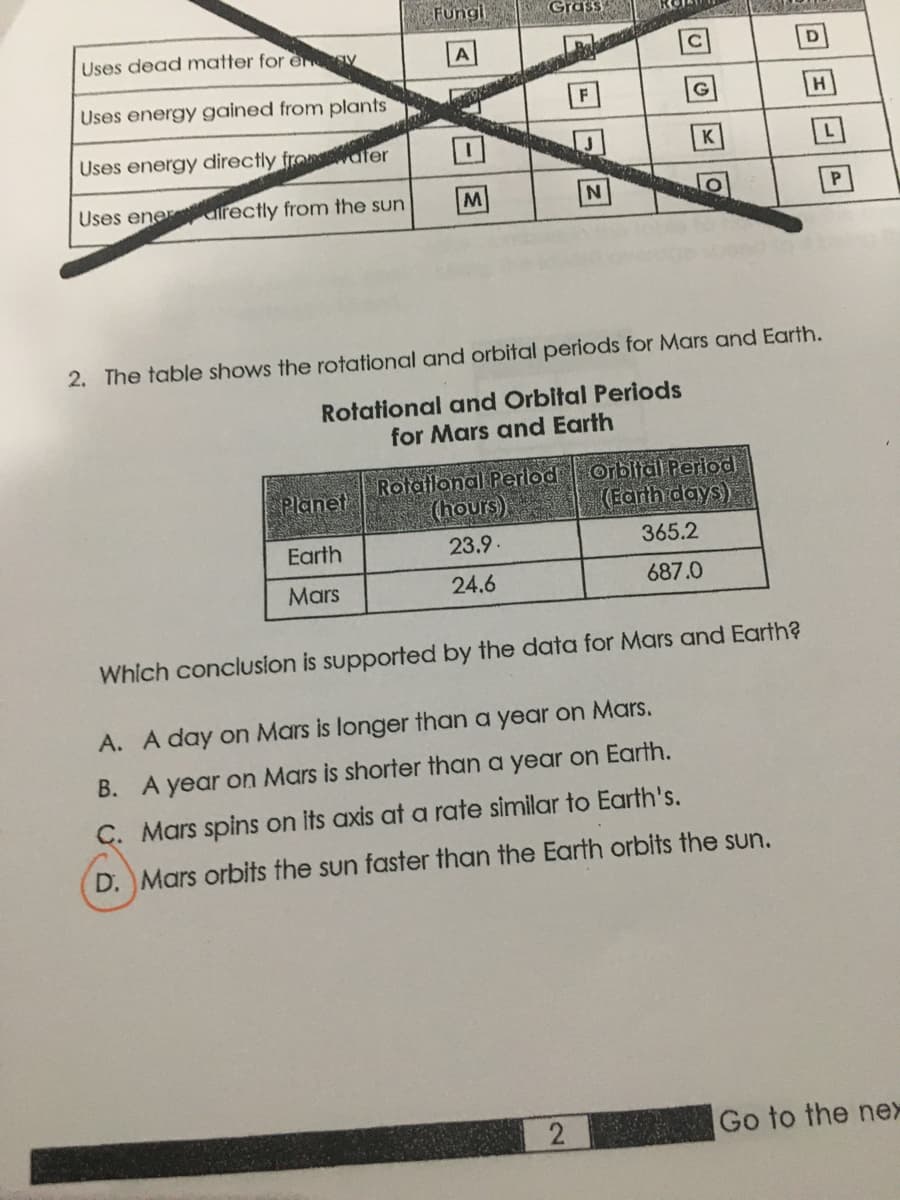3. A student measures the distance traveled by several toy cars in different time periods. Toy Car Data Distance Traveled (meters) Time (seconds) Car E G 4 1 H enter numbers in the table to compare the average speed of each car, from 1 being the lowest average speed to 4 being the highest average speed. Car Order H.
3. A student measures the distance traveled by several toy cars in different time periods. Toy Car Data Distance Traveled (meters) Time (seconds) Car E G 4 1 H enter numbers in the table to compare the average speed of each car, from 1 being the lowest average speed to 4 being the highest average speed. Car Order H.
Related questions
Question

Transcribed Image Text:3. A student measures the distance fraveled by several toy cars in different time
periods.
Toy Car Data
Distance Traveled
(meters)
Time
(seconds)
Car
F
4
G
4
1
H
enter numbers in the table to compare the average
speed of each car, from 1 being the lowest average speed to 4 being the
highest average speed.
Car
Order
H.

Transcribed Image Text:Fungi
Grass
Uses dead matter for ensy
D
Uses energy gained from plants
G
H
Uses energy directly fro ater
Uses enealrectly from the sun
M
P
2. The table shows the rotational and orbital periods for Mars and Earth.
Rotational and Orbital Periods
for Mars and Earth
Rotatlonal Perlod
(hours)
Orbital Period
(Earth days)
Planet
Earth
23.9.
365.2
Mars
24.6
687.0
Which conclusion is supported by the data for Mars and Earth?
A. A day on Mars is longer than a year on Mars.
B. A year on Mars is shorter than a year on Earth.
C. Mars spins on its axis at a rate similar to Earth's.
D. Mars orbits the sun faster than the Earth orbits the sun.
Go to the ne
Expert Solution
This question has been solved!
Explore an expertly crafted, step-by-step solution for a thorough understanding of key concepts.
This is a popular solution!
Trending now
This is a popular solution!
Step by step
Solved in 3 steps
